
Skywatchers have had their eye on comet 21P/Giacobini-Zinner, parent object of the Draconid meteor shower. They’ve been picking it up with small telescopes, and capturing its photo, for at least a month now. Comet 21P/Giacobini-Zinner – affectionately called simply 21P by astronomers – came closer to Earth on the night of September 9-10, 2018, than it had in 72 years! It swept past us at a completely safe distance of 36 million miles (58 million km) from our planet. That’s nearly as far from us as the next planet outward in orbit – Mars – is right now. But, for a comet, it’s close!
And that’s one reason astronomers have been excited about this comet. But there are more reasons! Keep reading below.
Meanwhile, a second comet – Wirtanen – will come even closer and might become visible to the unaided eye later this year. More about comet Wirtanen at the bottom of this post.
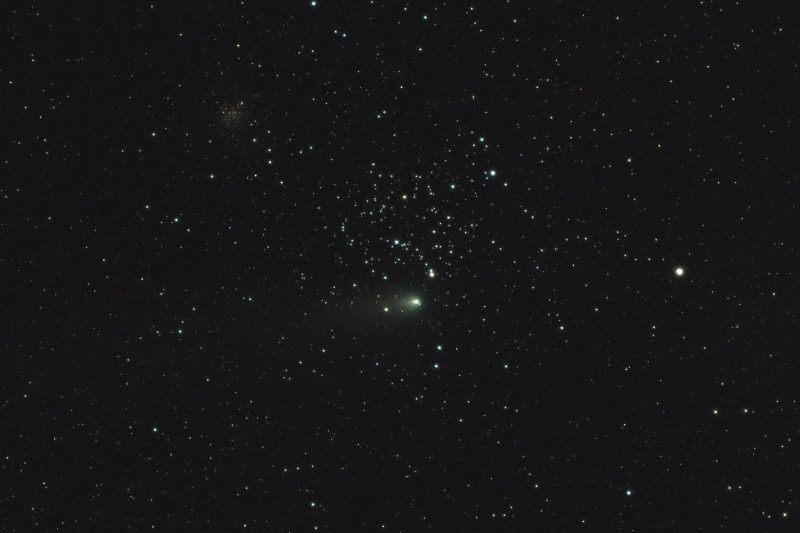
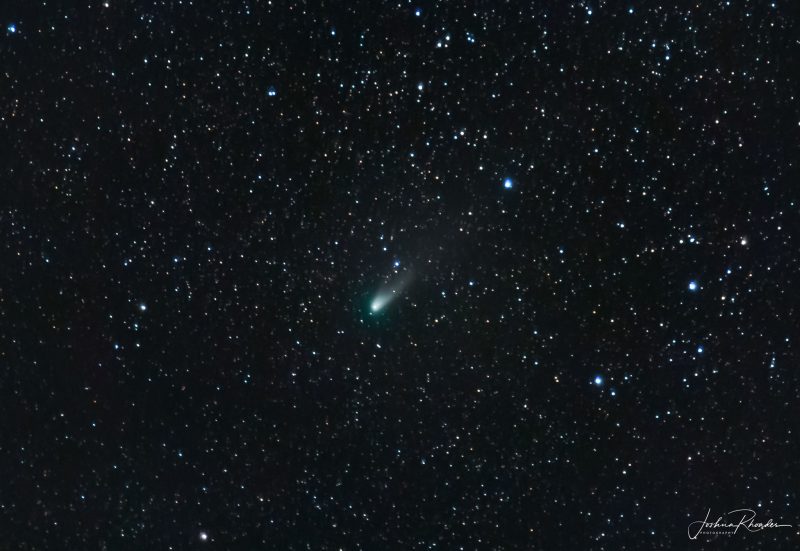
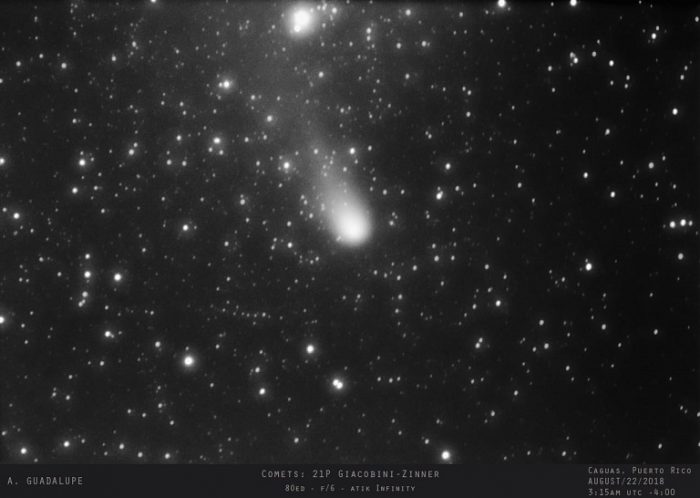
During the first half of September, comet 21P/Giacobini-Zinner has been visible with binoculars. Its estimated visual magnitude has been around 6.5 to 7. That means it hasn’t been – and won’t be –
This means comet 21P now has an atmosphere about twice the diameter of our solar system’s biggest planet, Jupiter!
Some images show the comet’s coma as a green color, which indicates the comet has cyanogen and diatomic carbon, gases that glow in a green color as they’re illuminated by sunlight.
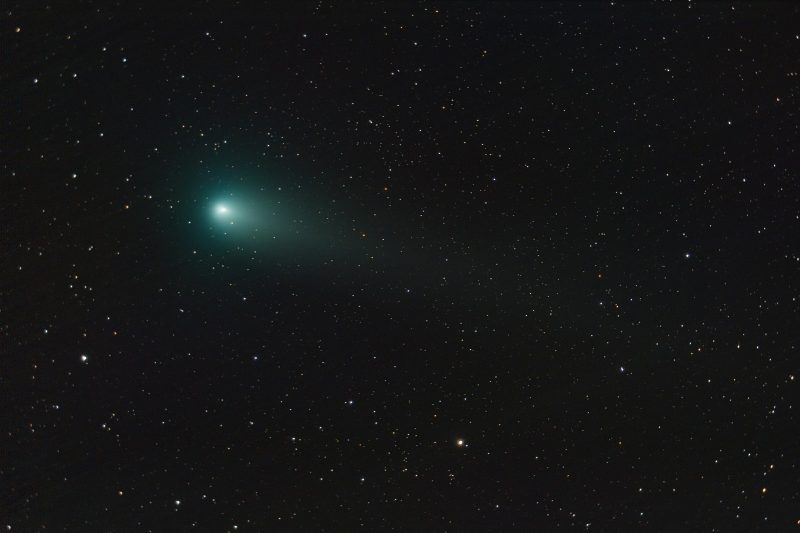
Now about that meteor shower. As it orbits the sun, 21P produces some debris, causing the Draconid meteor shower. In 2018, Draconids will probably be seen on the evening of October 7 or 8, close to the new moon phase. The Draconids are not known for being an outstanding shower in most years. But, when a parent comet is nearby, the resulting meteor shower can be spectacular. We haven’t seen any predictions for a spectacular Draconid shower in 2018 … yet. But it’s definitely a shower worth watching. Read more … All you need to know: Draconids in 2018.
Comet 21P was discovered on December 20, 1900, by Michel Giacobini from France, and then was seen again or recovered by Ernst Zinner from Germany in October 1913. It is a frequent visitor to Earth, with an orbit around the sun lasting 6.6 years.
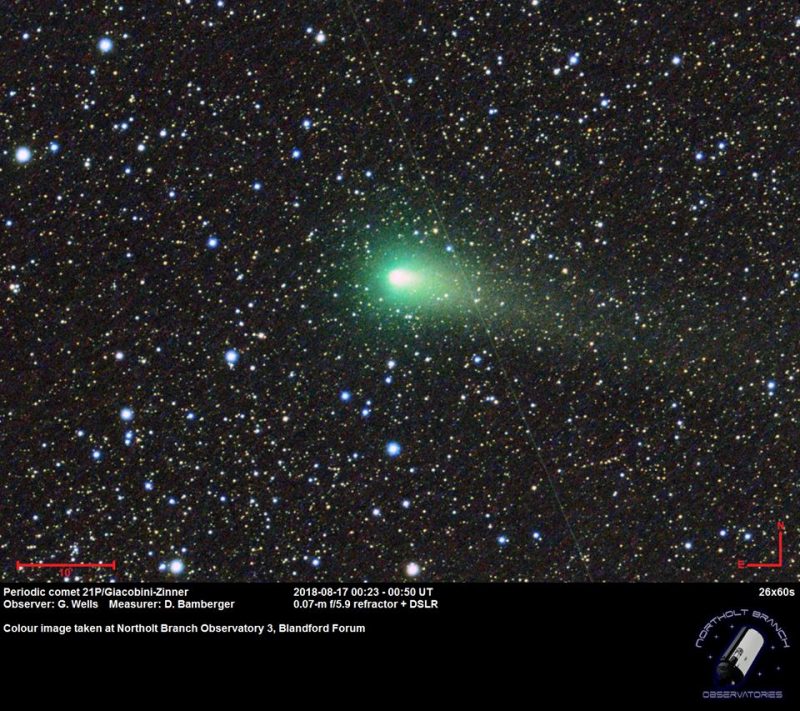
Another comet approaching Earth is 46P/Wirtanen. In December 2018, comet Wirtanen might be visible with the unaided eye, at least from dark skies. Closest approach to the sun will be December 12, 2018, and closest approach to Earth is just a few days later, on December 16. According to astronomers at the University of Maryland, this passage of comet Wirtanen near the Earth (near by comet standards, that is) will be the 10th closest approach of a comet in modern times. At its closest to us, the comet will be about 30 times the moon’s distance (7.1 million miles, or 11.5 million km). Contrast that number to the number of 21P/Giacobini-Zinner’s closest approach to Earth (36 million miles, or 58 million km).
Estimates indicate Wirtanen might reach a visual magnitude of 3.5 to 6. That would place the comet clearly in the realm of visibility with the unaided eye (although diffuse objects like comets are tougher to see than the pinpoints of stars at comparable magnitudes).
And, of course, comets have been shown to be unpredictable. We will keep you updated.

Bottom line: EarthSky community members’ photos of comet 21P/Giacobini-Zinner, which came closest to Earth on the night of September 9-10, 2018 – and information about comet Wirtanen, coming closest in December.











